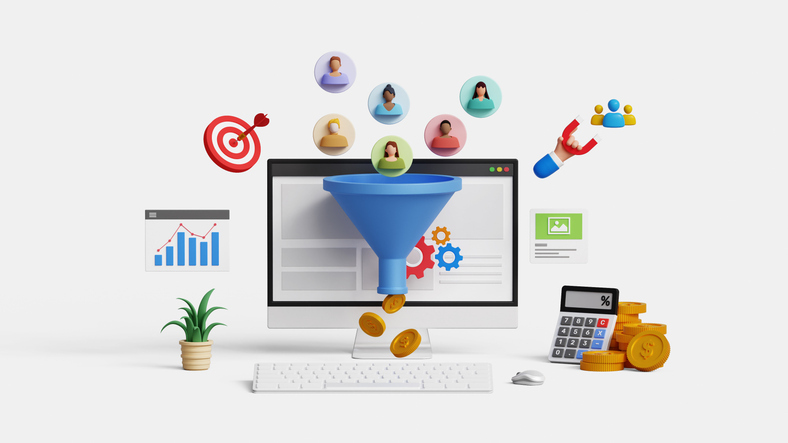Most B2B marketing teams were built around demand generation. It’s what got the job done for years: launch content, drive leads, score them, then pass to sales. Bing, bang, boom.
But if your business is shifting toward strategic accounts, longer sales cycles or bigger buying committees, demand gen alone starts to fall short. That’s where ABM comes in.
Account-based marketing isn’t a different channel. It’s a different mindset.
ABM flips the funnel, prioritizes quality over quantity and focuses your efforts on the accounts that actually move revenue.
It’s like working backwards: start with your dream customers, then build everything to win them over.
Still, the line between ABM and demand gen can get blurry, especially for teams trying to balance both. Here’s how they really differ, when to use each and how to know what works best for your goals.
Funnel Structure
Demand gen starts at the top. The goal is to attract as many leads as possible, qualify them and pass them down the funnel. It’s built for scale and volume.
ABM starts at the bottom. You identify a defined set of high-value accounts, then build campaigns that engage and convert them. It’s focused and selective from the start.
Why it matters: If you’re trying to increase reach, demand gen makes sense. If you’re selling into a limited set of high-fit accounts, ABM keeps your time and budget focused where it counts.
Who You’re Targeting
Demand gen is lead-centric. You create content and campaigns to attract individuals based on personas or behaviors. Once they convert, you try to figure out where they fit.
ABM is account-centric. You know who you want before you launch anything. You focus on influencing the entire buying committee inside those accounts, not just one lead.
Why it matters: In B2B, deals rarely happen through a single decision-maker. ABM gives you visibility into account-level activity and helps you engage the right mix of roles to move things forward.
Personalization vs Scale
Demand gen relies on automation. Think batch nurture emails, gated eBooks, paid ads and retargeting. It’s efficient but rarely personal.
ABM leans hard on personalization. You tailor your messaging, content and outreach to match the company, industry or even individual roles within the account.
Why it matters: If you’re selling a solution that requires a considered purchase, personalization increases relevance and trust. That’s where ABM thrives.
Team Execution
Demand gen is often marketing-led. Campaigns are launched, leads are scored, then passed to sales once they meet a threshold.
ABM is collaborative. Sales and marketing align from the start—selecting accounts, planning outreach and sharing insights throughout the process.
Why it matters: When sales and marketing operate in silos, results stall. ABM forces alignment by design and ensures both teams are invested in success.
Success Metrics
Demand gen tracks activity. Think form fills, lead scores, open rates and MQLs.
ABM tracks outcomes. Instead of counting clicks, you’re tracking whether the right accounts are moving deeper into real sales conversations.
Why it matters: If you need to prove marketing’s impact beyond lead volume, ABM connects your efforts to sales metrics that matter—like pipeline velocity and win rates.






